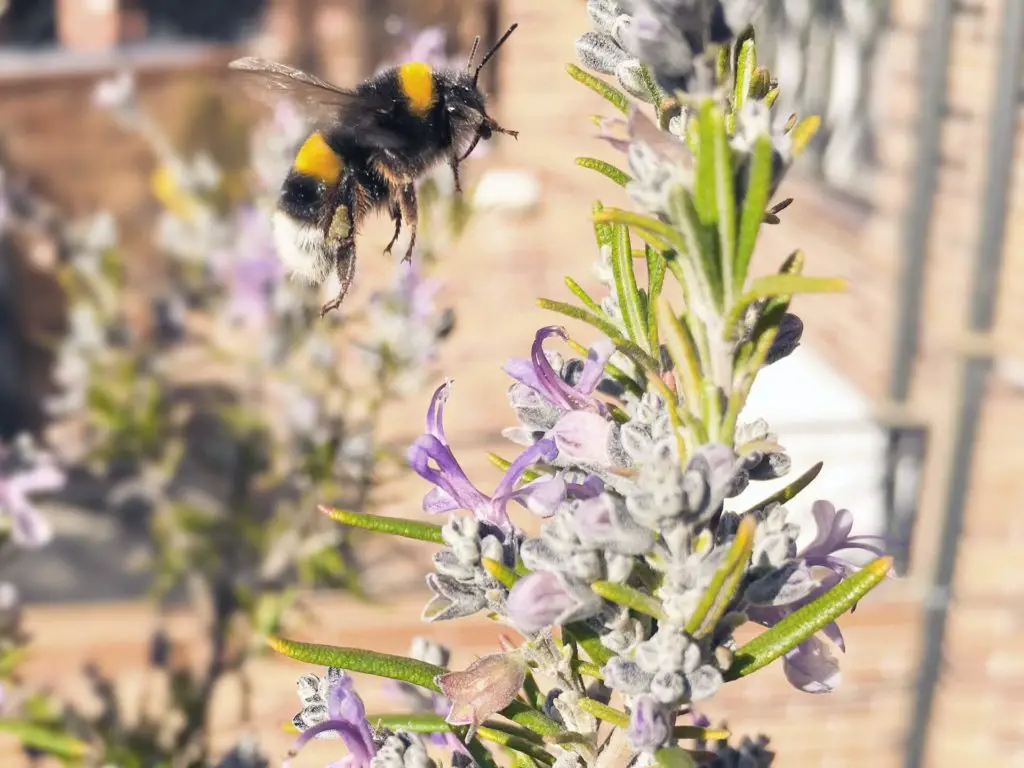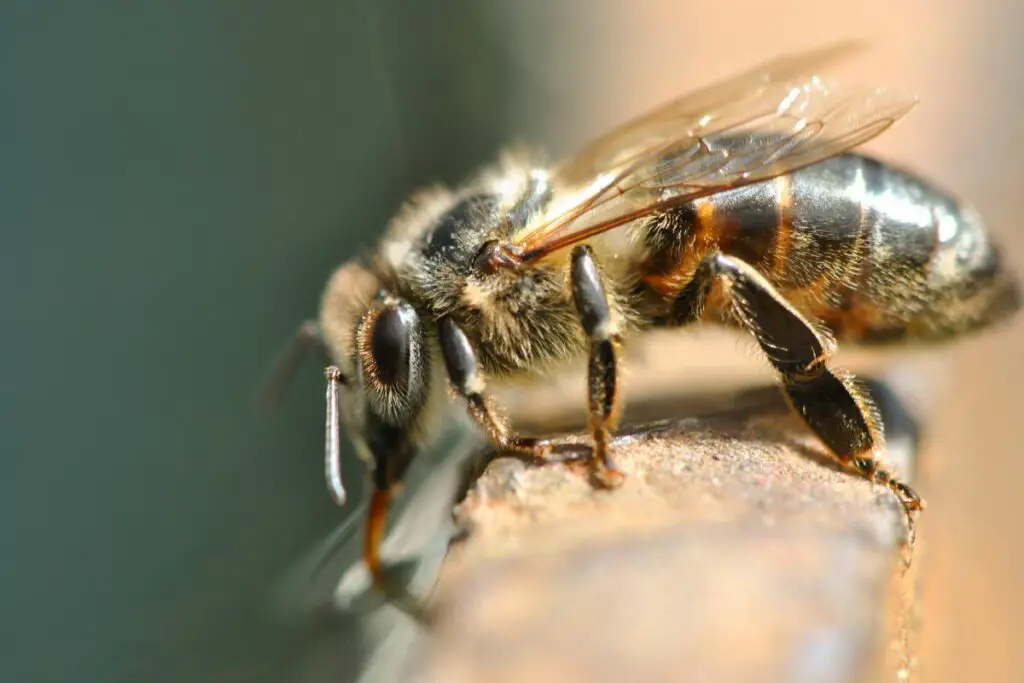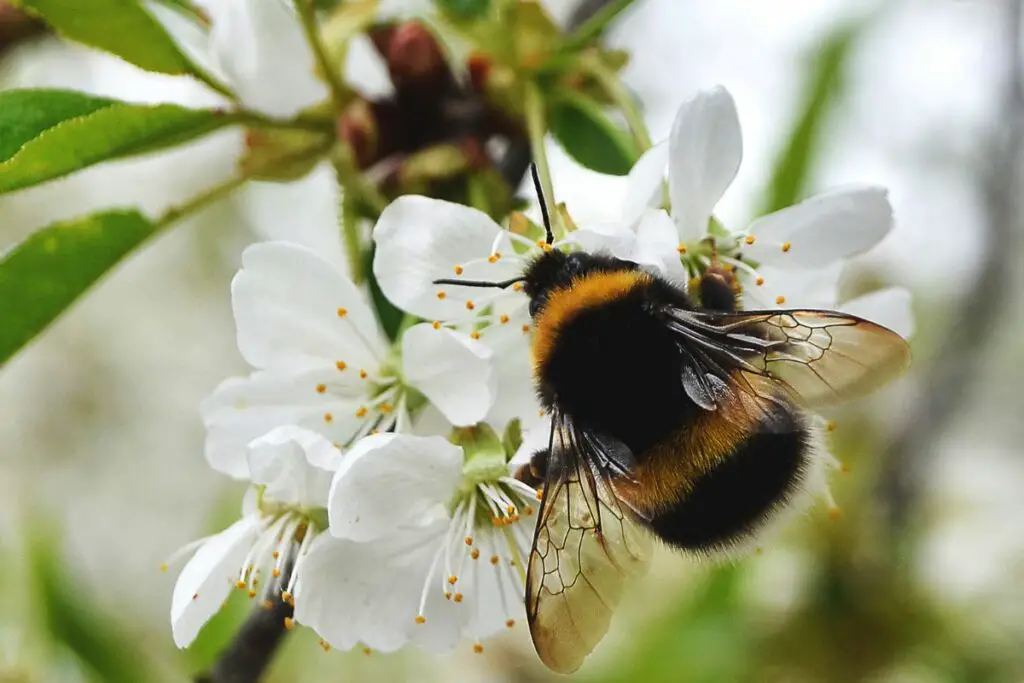Last updated on January 5th, 2024 at 02:32 pm
Bumblebees use sight and smell to identify potential new foraging locations. This means they will often hover just above the heads of flowers assessing the viability of each flower.
Male bumblebees can be very territorial and will often hover in one spot waiting for a female bumblebee to emerge so he can mate.
Male carpenter bees will also hover for an extended time in one spot to protect the outside of their nest while the females care for the young inside.
Hovering to inspect resource-rich flowers
Resource gathering is the most likely reason you will see a bee hovering for prolonged periods. This same behaviour can be observed amongst the Hummingbird population as they seek out suitable forage.
All bees including bumblebees have compound eyes, which means they can see things humans don’t.
Compound eyes are visible on either side of the bumblebee’s head. These eyes allow the bumblebee to identify things like sunlight, landmarks and even pheromones left by previous bees.
This clever natural evolution gives bees the ability to see ultraviolet.
Many plants display ultraviolet colours that are imperceivable to the human eye but act as glowing landing strips for any bees hovering above.
Check out Revive a Bee’s recommended wildflower mix to encourage more bumblebees and pollinators in your garden or wild area.
Bumblebees hovering to mate
Bumblebee males will often be seen hovering over an area. Males of the species are very territorial and will wait in a designated spot, waiting for a mate.
Any bees that fly within his territory will be investigated immediately. Male bees will be scared away by shows of dominance and aggression and they will try to mate with any females.
Interestingly some males have been known to threaten their reflection unknowingly if you have a mirror, window or reflective surface on the exterior of your property.
- 🐝🐝🐝 Wildlife Gifts To Help Bees & Pollinators - Your Bee Revival Keyring contains a special...
- 🎁🎁🎁 Bee Gifts For Women - Give the gift of giving with our bee accessories from Revive a...
- 🌱🌱🌱 Plantable Seed Paper Packaging/Seed Gifts - What makes the perfect eco gift? We think...
- 🌍🌎🌏 Planet Friendly Gadget Keyring - A great gift for a friend or loved one who cares about...
- 🐾🐾🐾 Supports Rewilding Britain - A percentage of every sale will be donated to Rewilding...
Protecting the nest
Male carpenter bees are often mistaken for bumblebees due to their large size. These males of the species have two key tasks, mate and protect their partners and young.
When mating, male carpenter bees will hover in wait for a potential mate.
Despite being much larger, male carpenter bees will often hover a few inches from a human to inspect you as you enter their territory.
Thankfully male carpenter bees do not have a sting so they are purely an annoyance more than anything else.
When they’ve found a suitable mate they will hover for hours outside their nest in a defensive stance waiting for any potential predators to ward them off.
In cases where several carpenter bees have nested nearby, the females will often share the burden of defending the nests and foraging.
Why do bees fly around me?
Bees are well known for hovering around humans.
Bees are naturally attracted to bright colours they associate with flowers and potential food sources.
If you’re wearing bright colours they might mistake you for a blooming flower!
Similarly, sweet smells, especially those resembling floral scents, can lure bees.
They have an excellent sense of smell and are drawn to sugary aromas, which signal the presence of nectar so carrying sugary food can also attract bees.
*Expert tip – If you’re allergic to bee stings it might be worth leaving those bright colours at home.





